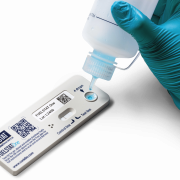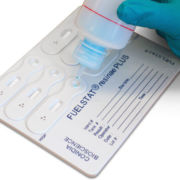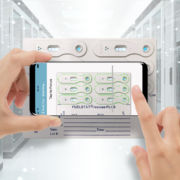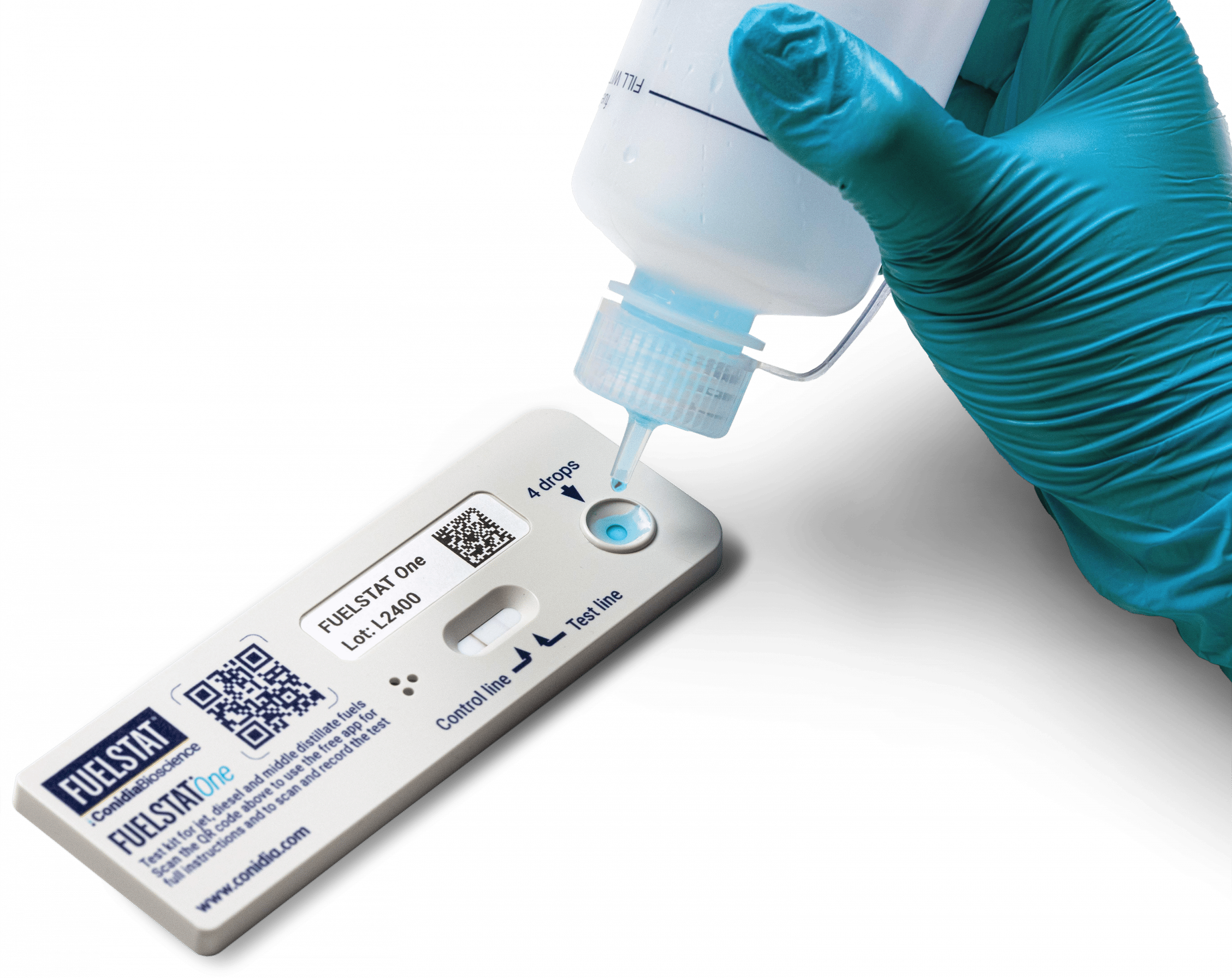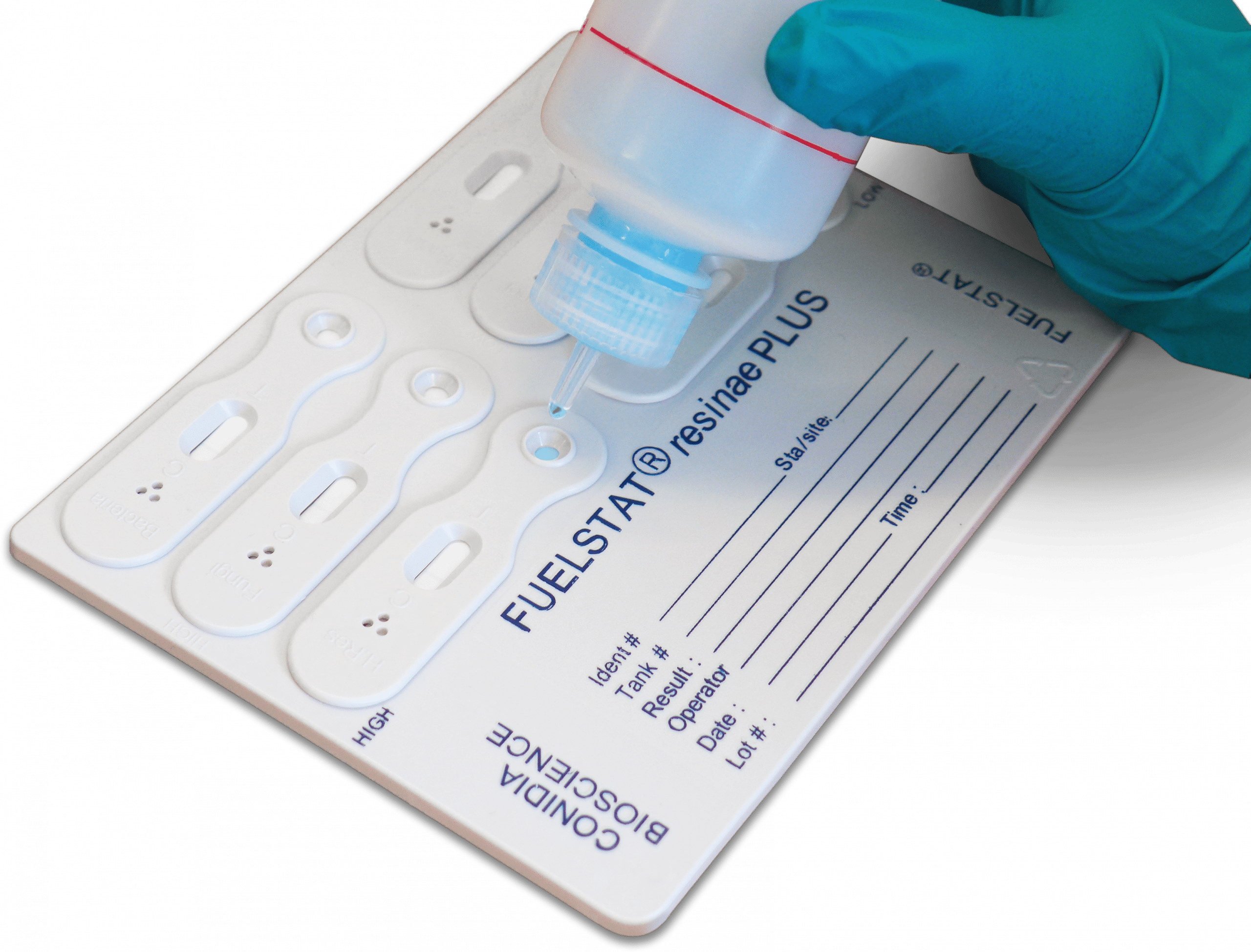
Rapid fuel testing kits for microbial contamination
If so, FUELSTAT® fuel testing kits can help you prevent costly contamination problems caused by microorganisms that can exist and thrive in fuel, read on to learn more.
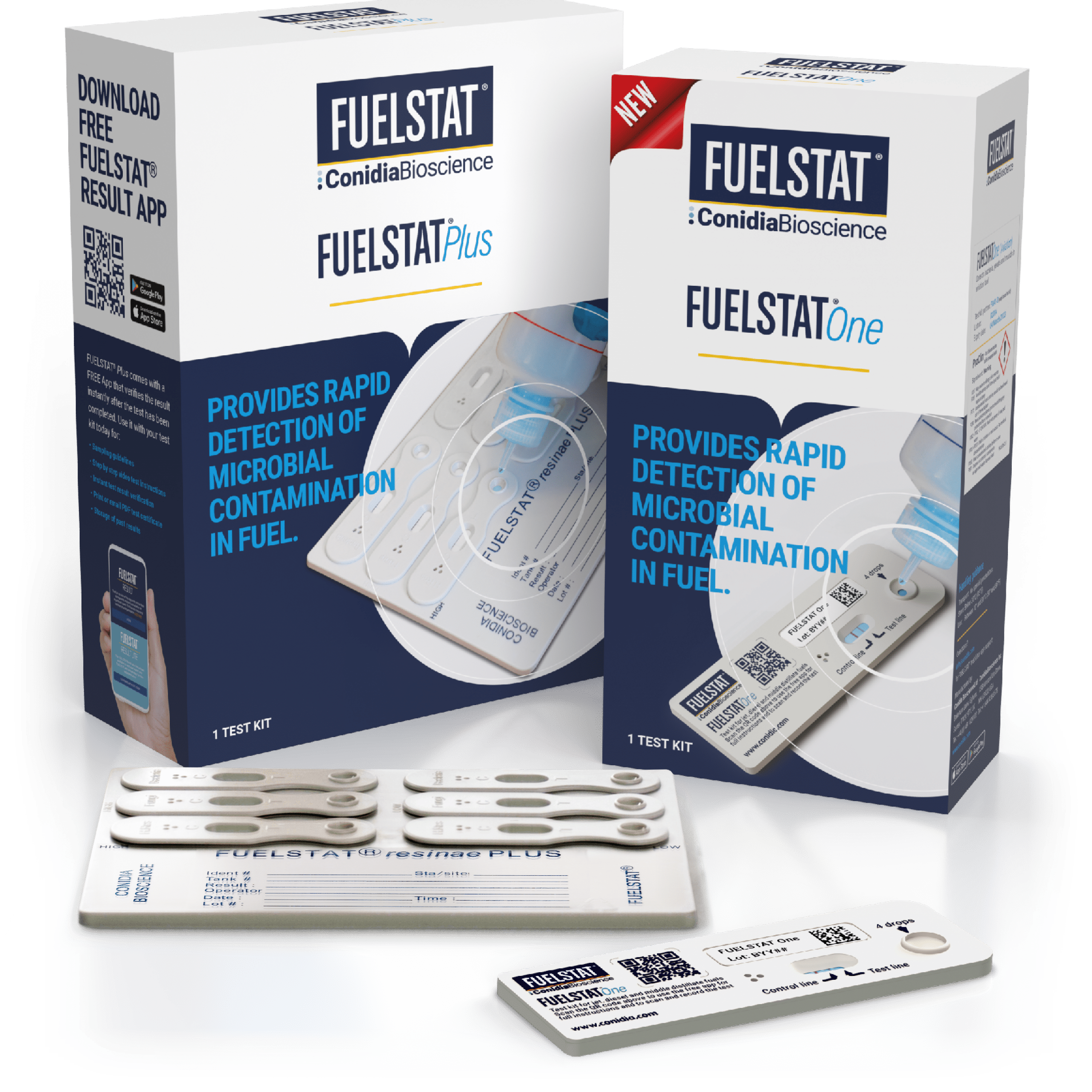
What are fuel testing kits used for?
Some of the most commonly used tests are the ones that detect microbiological contamination in diesel, jet fuel and all related derivatives.
This microbiological contamination is also known as diesel bug or diesel fungus. In jet fuel, it’s known as jet fuel fungus.
Microbiological contamination is made up of certain strains of bacteria, yeasts, and fungi that are dangerous to fuel. These contaminants are particularly prevalent in middle distillate fuels, which we know as jet fuel and diesel fuel.
You can now get a fuel testing kit specifically for microbiological contamination, which enables you to identify contamination at the earliest possible stage. Treating contamination and the issues in the early stages is faster, cheaper, and less risky than it would be in later stages.
Read More >> Fuel Contamination // Jet Fuel Test // Jet Fuel Contamination // Diesel Fuel Contamination // Diesel Fuel Contamination Test Kit // Diesel Bug
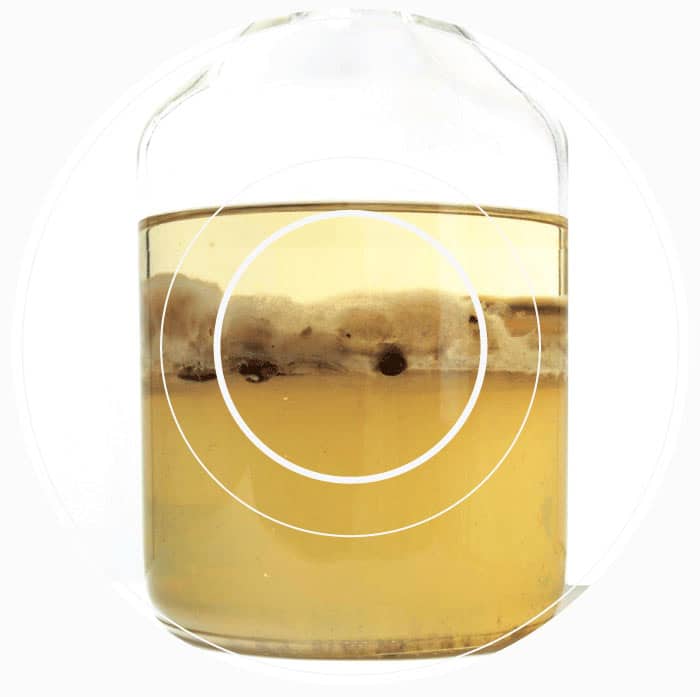


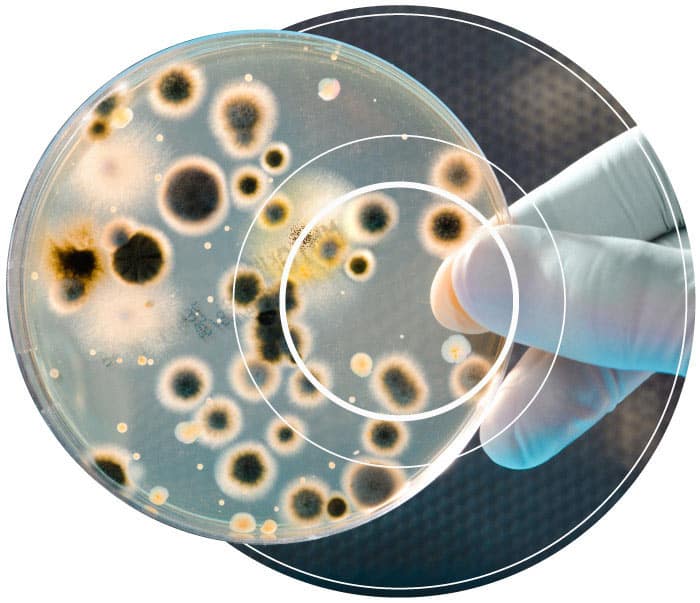


What issues does microbiological contamination cause?
- A tank builds up microbial matter until it can no longer be used and requires cleaning
- A generator engine fails to fire up because its filters are blocked by contamination (see Diesel Generator Fuel Testing)
- A fuel quantity indicator in an aircraft functions incorrectly because of a microbial biofilm coating the probes that read the fuel levels (see Aircraft Fuel Testing)
In a very serious scenario, microbial contamination can seriously damage tanks themselves. Left unchecked for too long, it can lead to Microbially Influenced Corrosion (MIC) of the tanks because of the acids it produces.
When microbial contamination reaches severe levels and produces these acids, it can lead to serious safety and environmental risks. For example, a large tank could develop a leak so that fuel escapes into the ground. Or in the case of commercial aircraft, a severe blockage could cause engine failure and put human life at risk.
FUELSTAT® fuel testing kits
Test your fuel on-site in 15-30 minutes — no special equipment required
What is a fuel test kit looking for in the fuel?
Quite simply, a fuel testing kit will measure directly or indirectly the microbial contamination in a fuel sample. Depending on the type of test, it may identify the type and quantity of microbes. There is always some presence of microbes in fuel, but tests will indicate if it is a negligible, moderate, or heavy amount.
The scale of the contamination indicates the actions that are recommended to treat the infection. As an example, a tank that has a moderate reading may require a simple application of biocide. Heavy contamination may require the emptying and cleaning of the tank and treatment of the fuel through a process known as fuel polishing.
Processes such as tank cleaning and fuel polishing come at a high cost and will put the asset out of action for a considerable length of time, therefore, it is best practise that a fuel management strategy includes a testing regime that tries to catch microbial contamination at the earliest, easiest and most cost-effective stage.
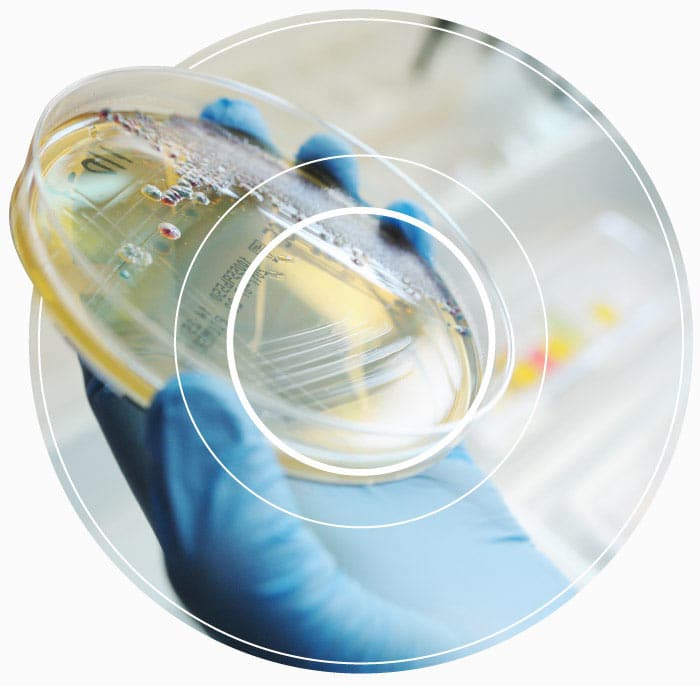


Do all fuel test kits work in the same way?
One group of tests called CFU growth tests look for microorganisms in a sample that are culturable on the agar-based media of the test. This means the test result may be misleading, as the sample may include species that are present but harmless to the fuel itself. For example, a common flu virus or e-coli microbes may be picked up by the test, despite causing no issues in fuel. Also, it will miss out on all microorganisms that cannot grow in culture.
Another group of tests, known as ATP tests (Adenosine Triphosphate) look indirectly for light emitted from cellular ATP (cATP)-mediated reaction, as an indication of the microbial load in a sample. This method gives results rapidly but requires investment in special equipment and could be considered relatively complicated to use to non- scientific trained users.
The third, most convenient and fastest test kits on the market come in the form of advanced lateral flow tests, unique to FUELSTAT. The technology differs slightly for the two kit options; FUELSTAT Plus is an immunoassay antibody test kit, which targets specific bacteria, yeasts, and fungi that are known to cause damage to fuel systems, FUELSTAT One uses Protein-ligand complex detection for a broader range of microbial contamination, with a fully quantitative contamination result.
What are the main types of fuel testing kits?
Colony Forming Units (CFU) growth tests for fuel contamination. These tests are either done in a laboratory using a method known as IP385, or using a method involving something called thixotropic gel which can be done on-site but also requires incubation for a period. These methods both require incubation for 4-10 days to complete the tests.
CFU tests often involve sending fuel, or a test bottle of thixotropic gel, to off-site or testing facilities in the organisation to be either tested and incubated or just incubated. The fuel must be sampled, handled and transported in a very sterile and timely way (within 24 hours). This is to reduce the risks of getting misleading results, which could lead to expensive fuel treatments that aren’t necessary.
These tests look for the light emitted from cellular ATP-mediated enzymatic reaction and give readings in RLUs (Relative Light Units), indirectly indicating the microbial presence in a sample.
ATP tests are fast and can hypothetically be done on-site, but they require an additional piece of equipment known as a luminometer. Because of this, tests are usually conducted in an off-site laboratory or testing facility. As with CFU tests, fuel has to be transported quickly and under sterile conditions.
These on-site tests are the most modern on the market, providing the quickest result and are simplest to perform. They are the only tests that are currently verified using an app for immediate test report generation full digital sharing and storage of results worldwide. They come in 2 forms:
Immunoassay lateral flow test (FUELSTAT Plus)
Immunoassay antibody test kits can identify individual sub-species of microbial contamination. as such FUELSTAT Plus targets specific bacteria, yeasts, and fungi that are known to cause damage to fuel systems. The results can be read by eye and verified using the free app to give clear and immediate indication of Negligible / Moderate / Heavy contamination levels.
Protein-ligand complex lateral flow test (FUELSTAT One)
FUELSTAT One uses a different technology detecting the Protein-ligand complex in the sample for a broader range of microbial contamination. Results are read by the free app which is able to read the line intensity of the lateral flow test to not only provide an immediate indication of Negligible / Moderate / Heavy contamination levels, but also a fully quantitative contamination result value.
FUELSTAT® fuel testing kits
Test your fuel on-site in 15-30 minutes — no special equipment required
Why fuel users around the world are choosing lateral flow fuel testing kits
Easy to use. Lateral flow fuel test kits are unique in that they do not require a multi-step rigorous process. In fact, after a few minutes of instruction, they are hard to do wrong. The tester is only required to take a sample of fuel, put the fuel or water from the sample into the provided sample bottle, and simply add 4 fuel drops onto the test.
Works in non-sterile environments. Lateral flow fuel tests are also unique because they do not require any sterility measures on-site. Apart from having a clean sampling container, it is not important to be vigilant about hygiene during fuel sampling or handling.
Digitally verified results. ILateral flow test results can be verified and digitally recorded instantly using a smartphone app. This helps in clarifying results and takes away the burden of manual reporting, so there is less possibility of human error.
FUELSTAT®: the 15-30 minute fuel test kits
FUELSTAT® is the only true on-site fuel testing kit, working on the spot without any transportation or incubation needed. The result is delivered in just 15-30 minutes. That means any remedial maintenance required, such as tank cleaning, fuel draining, applying biocide, can be done immediately. Not days or weeks later.
Annually around 120,000 FUELSTAT testing kits are used in over 130 countries. In aviation alone, it has been used by more than 400 airlines globally. FUELSTAT® Plus complies to ASTM International D8070 Standard.
FUELSTAT® fuel test kits come complete in a sealed package with the test cassette, test bottle, pipette and full instructions. Apart from a basic sampling jar, you don’t need any technical equipment—just a clean, flat work area. FUELSTAT® also has simple step-by-step instructional videos to follow with your test within the app, or on thsi website.


So which FUELSTAT® test kit is right for me?
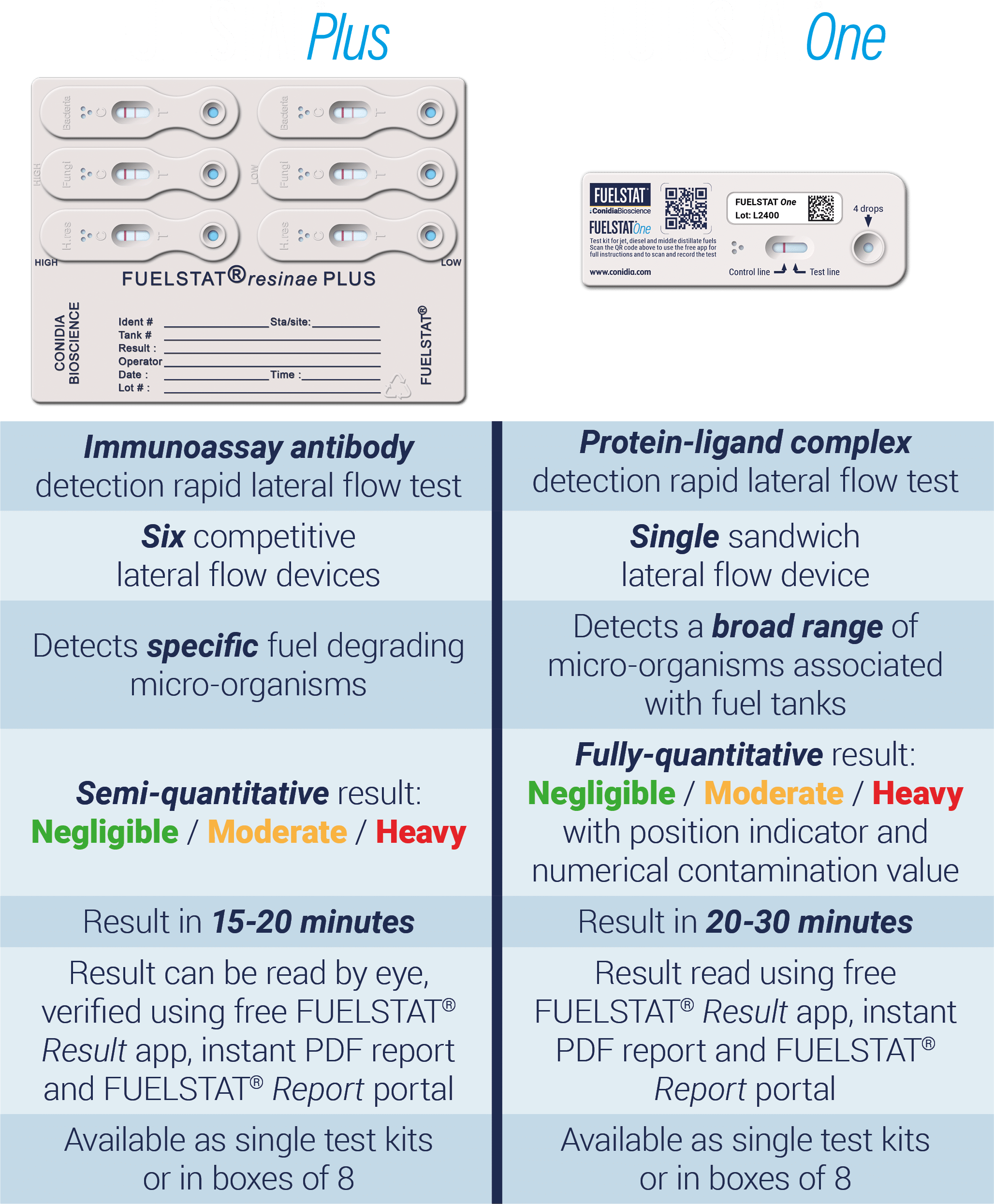


Easy three-step process for on-site FUELSTAT® testing:
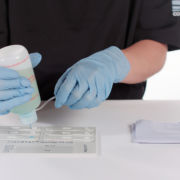


Step 1
Test with FUELSTAT®, placing 4 fuel sample drops into each test well
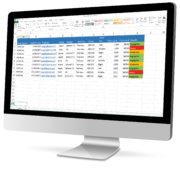


Step 3
Get a Full Analysis Report from the app on the FUELSTAT® Result Portal, with all results stored for later retrieval and analysis
Get FUELSTAT® fuel testing kits
Visit our site now to learn about our products and order your FUELSTAT® fuel testing kits.

